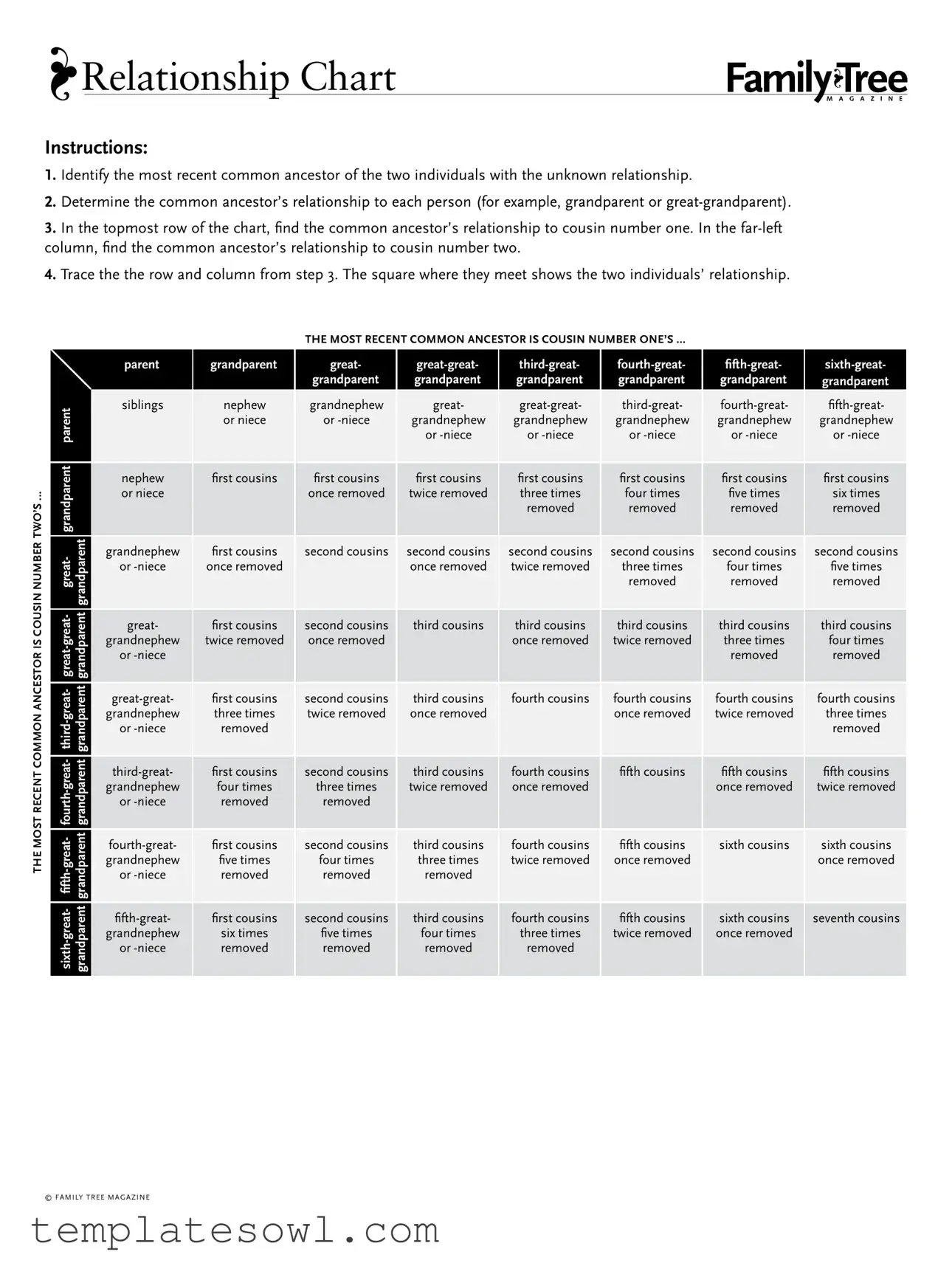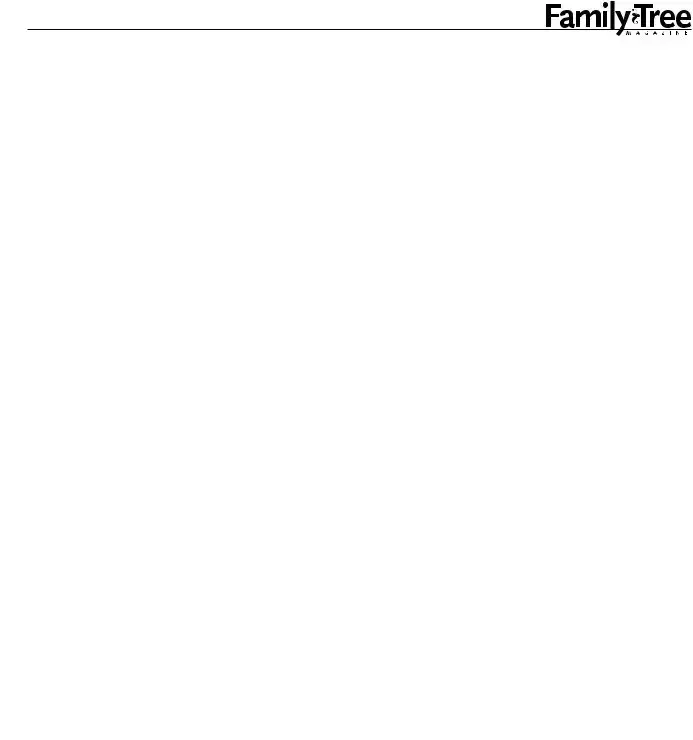What is the purpose of the Relationship Chart form?
The Relationship Chart form helps individuals determine the specific relationship between two people by identifying their most recent common ancestor. This tool is especially useful for genealogical research, helping family members understand how they are related. By tracing connections through generations, users can uncover family ties that may have previously been unknown.
How do I find the most recent common ancestor?
To identify the most recent common ancestor, start by examining the family trees of both individuals in question. Look for the last shared ancestor in both trees. This could be a grandparent, great-grandparent, or even further back in time, depending on how the family trees are structured. Accurate records and names will aid significantly in this process.
What relationship do I need to establish?
Once you locate the most recent common ancestor, you must determine this ancestor's relationship to each individual. For example, is the common ancestor their grandparent, great-grandparent, or something else? This step is crucial for accurately filling in the chart and understanding the relationship between the two people.
How do I fill out the Relationship Chart?
Begin by placing the common ancestor’s relationship to cousin number one in the topmost row of the chart. Next, place the relationship of cousin number two in the far-left column. After that, trace the row and column to find where they intersect. The meeting point in the chart will reveal the precise relationship between the two individuals.
What if the individuals are only distantly related?
The chart can accommodate distant relatives as well. For instance, once you’ve identified the common ancestor, you may need to identify whether they are first cousins, second cousins, or even further removed. The chart allows for multiple generations and levels of relation, so it remains versatile in showing how distant relatives are connected.
Can the chart show relationships beyond cousins?
Yes, the Relationship Chart is designed to show a variety of relationships beyond just cousins. It includes terms like siblings, grandnephews, and great-grandparents. Thus, it can illustrate a wide range of familial connections, making it a comprehensive tool for exploring family relationships.
What does it mean when someone is 'once removed'?
The term 'once removed' indicates a difference of one generation between cousins. For example, your parent's first cousin is your first cousin once removed. If two people are 'twice removed,' it signifies a two-generation gap, such as your grandparent's first cousin. Understanding these terms is essential for accurately interpreting the chart.
Can I use the chart for legal purposes, like inheritance?
While the Relationship Chart is a helpful tool for understanding family connections, it is not a legal document. If you need to establish relationships for inheritance or any legal matters, it is advisable to consult with a legal expert or obtain official documents that validate familial connections, such as birth or death certificates.
Where can I find the Relationship Chart form?
The Relationship Chart form can typically be found in family genealogy resources, various online tools, or platforms dedicated to ancestry research. Many libraries and local historical societies also provide access to such forms for those interested in exploring their family history.

